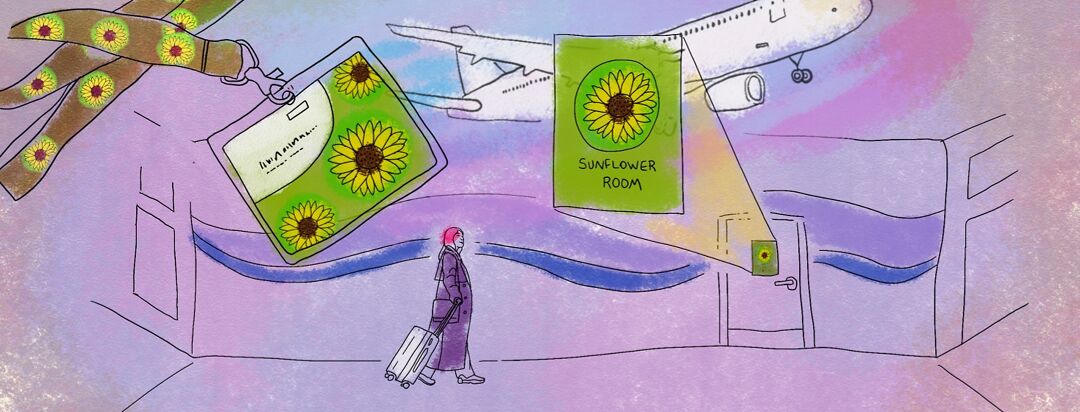The Hidden Power of Sunflower Lanyards: My Journey Through an Accessibility Revolution
As someone living with narcolepsy, a hidden disability that most people can’t immediately identify, the sunflower lanyard has become an essential part of my life.
Before the lanyard, I relied on a medical bracelet and necklace, hoping these items would signal to others that I might need assistance. However, many people mistook them for regular jewelry and didn’t recognize their purpose. When the sunflower lanyard became available, I felt relieved. It was an easier, more visible way for people to see that I have a condition that may require understanding or support.
Raising hidden disability awareness
During a trip to Australia, I visited a friend and met his 6-month-old daughter. From the start, I noticed the contrast in how accessibility was approached. At Heathrow Airport in London, signage for the sunflower lanyard was lacking, though my lanyard still helped signal my need for assistance. Once I landed in Australia, however, the experience was transformative. Airports there were well-equipped with sunflower lanyard signs, placed strategically near special toilets, security queues, and customer service areas. These accommodations made my travel experience significantly smoother and less stressful.
Australia's commitment to hidden disability awareness didn’t stop at airports. Sunflower lanyard symbols appeared across cities, from Darling Harbour to major public spaces, displayed on toilets and even billboards. This level of support reminded me how much more could be done back in London to raise awareness and create a supportive environment for those with hidden disabilities.
It makes a difference
Having a disability that is not visible can make you feel like a burden when using public spaces. It can happen when people look down at you because you haven’t offered your seat to an older person, or no one is offering you a seat because you don’t look like you require one.
Living with a hidden disability, let alone a disability people still know very little about, means life can end up being full of adapting, constantly adjusting your schedule, and adding a ton of extra steps to everyday things in order to make them work for you. All in a world that partly thinks you don’t require any assistance or doesn’t even acknowledge your need any.
My time in Australia showed me how just a small thing of utilizing the globally-recognized sunflower lanyard could help make life just a little more normal for those living with hidden disabilities within our society. It was amazing to not have to worry about being overly exhausted in the check-in queue at the airport because there was a designated line highlighted with the sunflowers.
This or That
Do you aim to raise awareness about narcolepsy?
A greater sense of empathy and understanding
Returning to London, it struck me that integrating sunflower lanyard awareness into everyday public transport could make a significant difference. Imagine seeing this symbol on the Underground, on buses, or in designated seating areas. It would help others understand why someone with a hidden disability might need a reserved seat, bridging a gap of understanding and fostering inclusivity.
The sunflower lanyard initiative is not just limited to Australia or the UK; it has expanded globally. By simply searching "sunflower lanyard" online, you’ll find a list of countries supporting this initiative, and obtaining a lanyard is affordable: under five pounds, with options to personalize it. You can add your photo, list your disability, and even include a contact number for a carer or support person. This accessibility has made a world of difference for people like me, who want to feel understood and seen without having to constantly explain our conditions.
Australia offered me a glimpse into a future where hidden disabilities are recognized and supported in public spaces. I hope to see London adopt similar practices, making the invisible visible and encouraging a greater sense of empathy and understanding for all.

Join the conversation